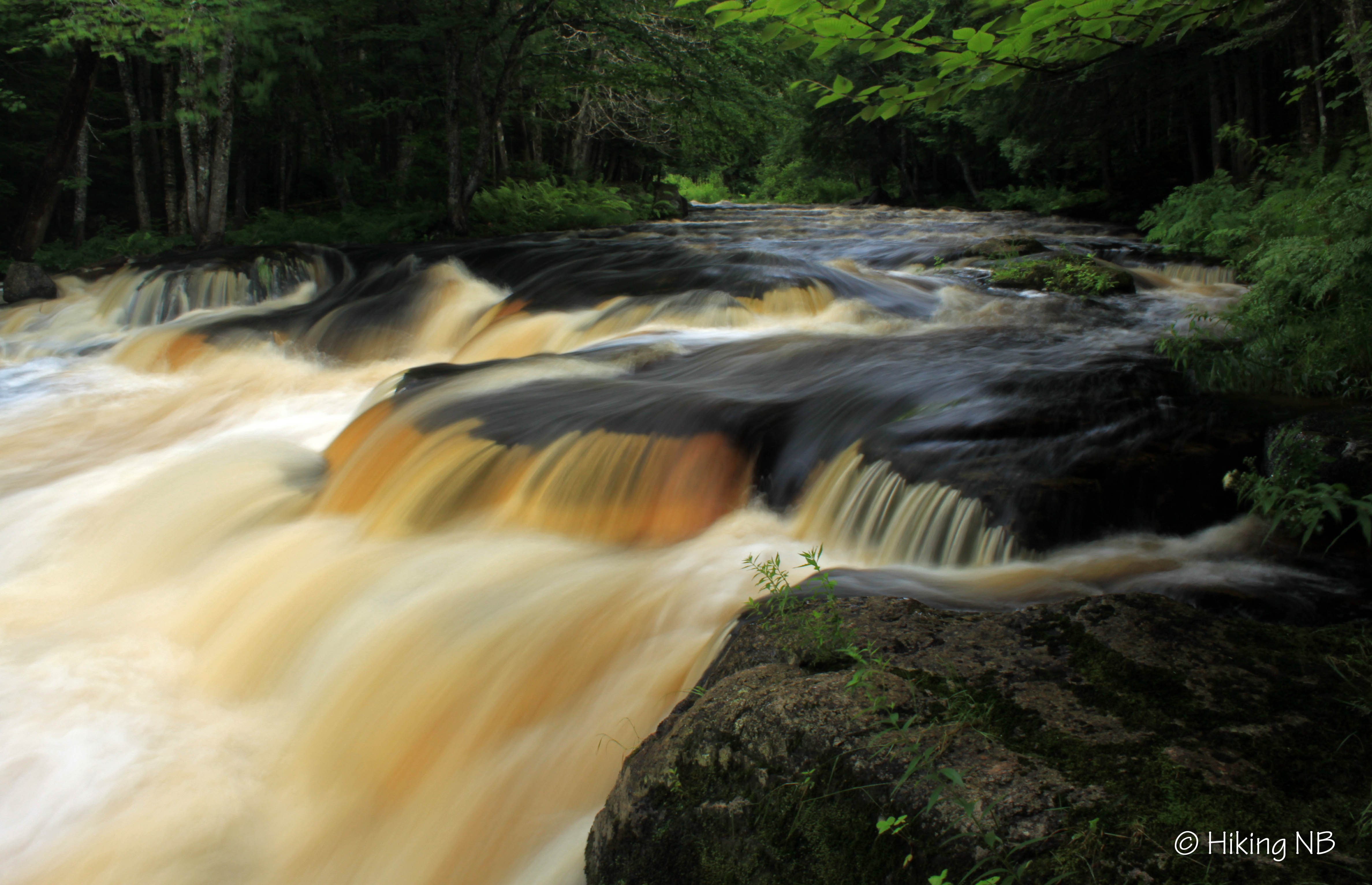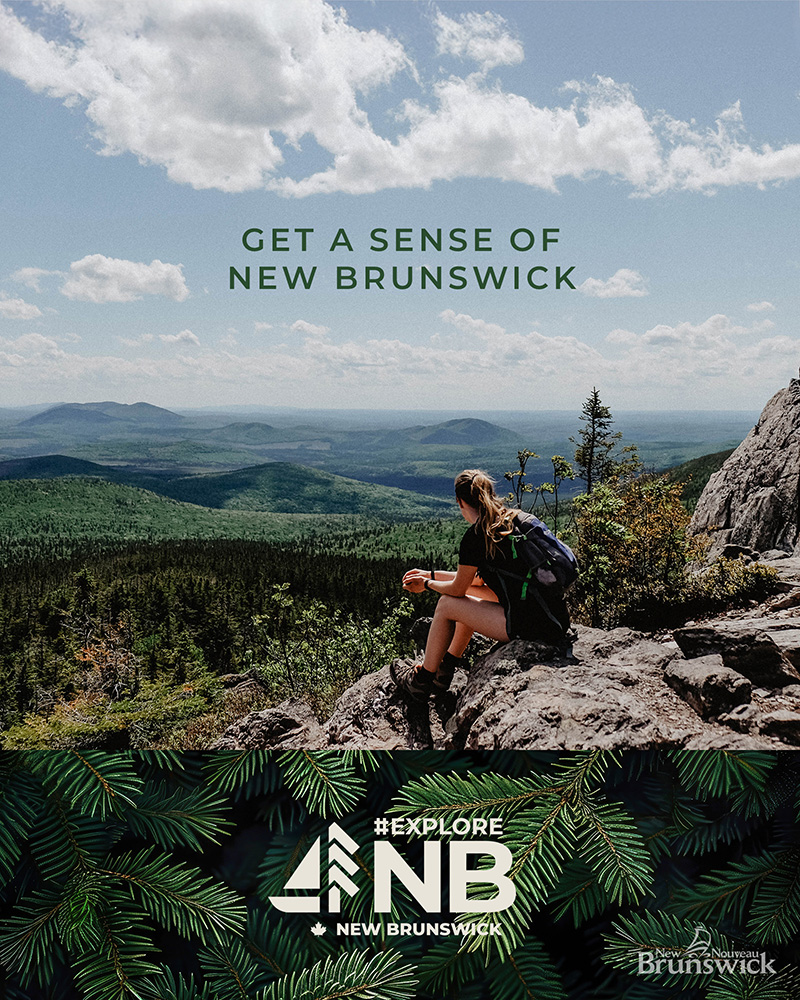Lookout Trail
Big Pokiok Nature ParkVideo
Quick Facts
| Difficulty | easy |
| Trail Type | mixed |
| Distance | 620 metres return |
| Estimated Time | 15 minutes |
| Surface Type | crushed rock |
| Elevation Change | 59 metres |
| Features | waterfalls |
| Trail Markers | red squares |
| Scenery Rating | recreational |
| Maintenance Rating | medium |
| Cell Reception | strong |
| Dog Friendly | yes |
| Fees | none |
From the Sign
The following are descriptions from a brochure that used to exist for the park.
- Forest Succession - This site illustrates forest succession - what happens to a forested area after it has been harvested, as on the right of the trail, or after it has been disturbed naturally, by a spruce budworm attack as shown on the left. The effect is the same in both cases! Various "pioneer" trees begin growing, some of them, such as the pin cherry, eventually giving way to other species.
- Squirrels' Dining Room - In this area, which was selectively harvested for softwood logs about 1940, you see piles of cone scales on nearly every stump. That's because stumps are favourite feeding perches for red squirrels, which gather cones from trees, hide them for a while, and then take them out for a trunk-top lunch, all the while keeping a wary eye out for predators.
- Mixed Softwood Stand - Most of the trees in this mature softwood stand are about 130 years old. They include red spruce, balsam fir, eastern white cedar, and eastern hemlock. A stand like this is home to a variety of birds and mammals, including boreal chickadees and yellow-bellied flycatchers, pine martens and white-tailed deer.
- The Nest Box - A Wildlife Housing Project - That's a wildlife nesting box about 20 feet up a nearby tree. One of several of various sizes in the park, it supplements the natural tree cavities many birds and mammals need for nesting. This particular box is for the barred owl, one of the larger members of the owl family.
- A Road And Woodpile - Here the trail crosses an old logging road probably last used about 1940. Horses haulded logs along this road in winter, and the small pile of wood is a reminder of those days. Wasteful in human terms, the abandoned woodpile has nonetheless sheltered wildlife such as snakes, salamanders and mice, been a source of insects for woodpeckers, and a feeding perch for squirrels.
Map
Directions
For directions to the park go to the Big Pokiok Nature Park page.
Other Trails in the Park
External Links
Trail Last Hiked: May 7, 2017.
Page Last Updated: March 14, 2015.


